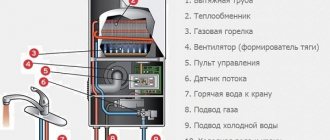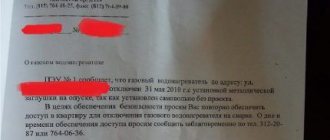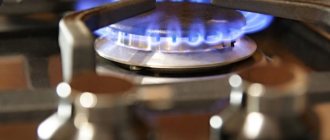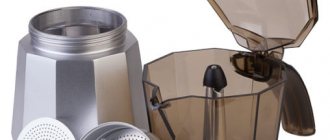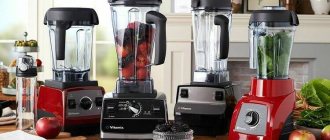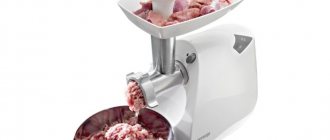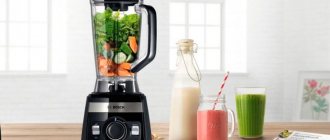Many housewives are owners of Soviet pressure cookers. Some women got them from their mothers and grandmothers. Therefore, they have difficulty using the pressure cooker. But this mini-saucepan saves a lot of time for modern housewives.
The old mini-saucepan model has a simple operating principle, despite the fact that it was released several decades ago. However, it is not too different from the work of modern models.
Before you start cooking, you must read the instructions. After this, they move on to the operation process. It is best to put foods in the pan that usually take a lot of time to cook.
How to choose a pressure cooker
The operating principle of all pressure cookers is the same, regardless of its model. They differ only in price. More expensive models are made of higher quality metal and have a greater range of functions.
Modern pressure cookers have undergone significant changes compared to the old Soviet models, when when cooking in it it seemed that it was about to explode and take off, they have become safer. They don't have that scary whistle coming out from under the lid and are easy to use. Today it is no longer just a saucepan with a sealed lid, but a whole kitchen device.
The first thing to consider when choosing is the type of pressure cooker. They are:
Mechanical, i.e. in which you can cook on an electric or gas stove;
Electrical. Such pressure cookers are usually combined with a multicooker function.
When buying a pan of the first type, you must take into account that not all of them are equally suitable for any type of stove. Aluminum can only be used on regular electric or gas. But you won’t be able to cook on a glass-ceramic or induction stove. For them you need to choose metal ones.
The second thing you should pay attention to is volume. It is better not to buy a pan smaller than 5-6 liters. After all, when cooking, there should be room for steam in it.
High-tech devices are equipped with a timer, lid locking, steam pressure selection and reset.
As for the shape, it's personal preference. You can buy one with a long handle or like a regular saucepan.
Types of pressure cooker pans
With a wide variety of models offered by the domestic industry, the operating principle of a pressure cooker remains unchanged. Each pan has a hermetically sealed lid. And all models have common features:
- Durable housing that can withstand pressures greater than what is needed for cooking.
- A cover equipped with a device for fastening to the body to ensure tightness.
- A working (compensation) valve that ensures constant pressure in the pan.
- A safety valve that is activated when the pressure becomes higher than the operating pressure.
- Inserts in the form of a grid or stand for steaming.
Some models may have additional devices for measuring internal pressure, devices for autonomous operation in the form of an electric heater.
Pot and lid material
Food-grade aluminum or stainless steel is used to produce pressure cookers. They are characterized by increased strength. Some models have additional heat-resistant glass lids with a hole to allow excess steam to escape.
How to use a pressure cooker
It is no more difficult to use than a regular saucepan.
Read the instructions
Modern pressure cookers come with a number of safety features, and for good reason. The heat generated by the steam reaches a temperature above the boiling point of water. Follow the instructions for your specific model.
Keep it clean
It is important that your pan is clean and in good working order. For example, you may need to replace the rubber gasket that provides a good seal. Keep the valves clean.
Liquid
Pressure cookers cook with steam. No liquid - no steam. You cannot and should not use your pressure cooker if you have not added enough water. The instructions should indicate the minimum and maximum amount of water. Some models may specifically indicate the amount of liquid for a particular product.
If you need to cook something with a golden brown crust, then you need to do this before you start cooking in a pressure cooker.
Don't overfill
Most, if not all modern models have a minimum and maximum marking on the inside. Don't exceed or underestimate them.
The pressure cooker should not be filled more than 2/3 full. When preparing a liquid dish (such as soup), avoid filling it more than halfway.
Overfilling causes product to be released from the pressure relief valve. If this happens, you will need to disassemble and thoroughly clean the parts.
You also need room for steam to make cooking easier. Here is an approximate filling based on volume:
Liquid products, including soup – no more than 1/2;
Vegetables and meat bones - no more than 2/3 pieces;
Foods that may foam or expand, including grains, legumes, rice, etc. - no more than 1/3.
Heat
Immediately set the heat to the highest setting. It is necessary that steam begins to form in the pan as quickly as possible. If you heat for too long, the food may be overcooked and not very tasty.
When the required pressure is reached, reduce the heat to the minimum temperature capable of maintaining the set value. Most modern pressure cookers are equipped with a pressure sensor and adjusting it is not difficult.
Gas and induction stoves immediately reduce the temperature. Electric ones retain heat for some time. Therefore, it is advisable to immediately turn on two burners, one of which will have low heat. Then, when the required pressure is reached, the pressure cooker can be immediately switched to low heat.
Set the cooking time
The instructions usually indicate the standard cooking time for each product. Consider the size of the pieces of meat, vegetables, and type of cereal. For example, brown rice will take longer to cook.
Place foods that take longer to cook first. Add the rest only after the pressure has been released. Add more liquid if necessary.
Pressure release
There are generally three ways to release steam in a pressure cooker:
Remove it from the stove and allow time for the steam to release on its own;
Open the pressure relief valve. Be sure to use gloves to avoid getting burned by hot steam;
Place the pressure cooker under cold water.
The first option is ideal for dishes such as soup or borscht.
The second is for almost any dishes and products.
The third is such as fish and vegetables, where digestion can occur.
The last two options save time.
Never open the pressure cooker without releasing the pressure. Modern models have a security feature that prevents it from opening.
If you are in a hurry, run under cold water until the pressure indicator drops and the lid opens easily.
The second option is to turn off the pressure cooker a few minutes before the end of cooking. The food will arrive at the residual pressure.
Take out the products
The materials most pressure cookers are made from are not designed for food storage. Once you've cooked your dish, transfer or pour it into something else.
How to reduce blood pressure
Experienced housewives claim that your ability to reduce pressure in a pressure cooker is the key to success in preparing tasty and healthy dishes.
You can do this in three ways:
- Natural reduction occurs due to turning off heat (gas or electricity);
- You can artificially reduce the pressure by placing the pan under running cold water;
- A quick reduction is possible if you open a special valve on the lid of the pressure cooker.
Often, vegetables and beans are cooked in such a container, since it takes a lot of time to cook them in a saucepan.
Natural pressure reduction is not a quick process. It takes from 5 to 20 minutes. This period depends on the amount of ingredients and their density. An important nuance: with prolonged cooling, meat or fish, as well as legumes, only become tastier, but vegetable stews quickly turn into porridge and lose their taste.
The main thing is to choose the right recipe and cook according to the algorithm.
Cold water and a special valve are an ideal way to reduce pressure while cooking grains and vegetables. This is a kind of “first aid” to reduce blood pressure and stop the cooking process.
The secret to a delicious pressure cooker dish is an accurate recipe and equally accurate cooking time. Then you can be sure that your culinary masterpiece will be appreciated.
It is recommended to clean the product and its components manually without using hard sponges or brushes.
Important! Before cooking in the pressure cooker, please read the operating instructions carefully. At first glance, this is a truism, but, you see, not every housewife bothers herself with such reading material. But in vain. There are nuances that distinguish pressure cooker models, and it is these that are very important to take into account when operating a particular device.
How to care for your pressure cooker
Pressure cooker lids cannot be washed in the dishwasher. Rinse it thoroughly under the tap with dishwashing liquid, removing the rubber seal.
Some pans are dishwasher safe, others are not. Look at the instructions. Otherwise, rinse in the sink.
Other parts do not need to be disassembled and cleaned individually each time. This must be done if they are blocked. The instructions will explain how to do this correctly.
Dry your pressure cooker completely by leaving it on the counter. Don't put it in the closet right away.
The lid should be stored upside down on the pan rather than closed.
How to cook in a pressure cooker
When you need to cook a tough piece of meat or boil jellied meat, a pressure cooker is the best choice for this.
You can stew it in it; tough pieces become soft and juicy.
The cooking time should only be counted after the desired pressure has been reached.
A timer is a must-have feature because food cooks so quickly that one to two minutes can have a significant impact on the final taste.
Try to maintain the desired pressure throughout the cooking process. You may need to increase or decrease the heat.
Pressure cooking is a wet method. You can't cook in it without water. At least there should be a water level of at least 2 centimeters.
What foods can and cannot be cooked in a pressure cooker?
When you get home late from work and have nothing for dinner, a pressure cooker can be a real lifesaver. Preparing a delicious dinner can only take a few minutes. You can even put frozen food in it right away.
All types of meat and poultry, almost all vegetables, including potatoes, are cooked in it. It's even possible to make cheesecake or custard. Dishes sometimes turn out tastier than from the oven or steamed.
On the other hand, some foods are not designed to be cooked in such a pan. If you try to cook them, you may clog it or ruin the taste of the food.
Do not cook foods in pressure cookers that may foam during cooking, which will lead to clogging of the valve. These are noodles and pasta, cheese, fish, since it doesn’t take much time to cook and it can simply boil over.
Do not boil or stew green leafy salads in it. High temperatures destroy beneficial nutrients.
Remember that a pressure cooker adds moisture to the food. Popcorn or potato chips are not suitable for cooking in it. They just won't turn out crispy.
The same goes for baking. You shouldn't fry in it either.
Some housewives make the mistake of adding all the ingredients at the same time and cooking them together. They think that as long as the desired temperature is reached, some of the food will be cooked. This is not true.
If you cook meat and potatoes at the same time, for example, you may end up with the potatoes overcooked or the meat not being cooked through.
Pay special attention to the order in which you should add the ingredients based on their cooking times according to your model's instructions.
The chicken will be ready in minutes
If you are using a pressure cooker to cook frozen foods, you do not need to defrost them first. The pressure cooker cooks and defrosts at the same time.
In short, the list of foods that can be cooked in a pressure cooker is very large. It’s easier to list a few products that, according to manufacturers, cannot be cooked in a pressure cooker. In this list they name apple and lingonberry compotes, pearl barley, oatmeal and other grains, split peas, pasta, noodles, spaghetti, rhubarb. These products have the ability to create foam and splashes when cooked, which can contaminate and clog the service valve from the inside.
How to use a multi-pressure cooker
Pressure cookers are very convenient. You can cook in them like in a slow cooker or pressure cooker by setting the desired mode. Before starting use, carefully read the instructions for your model. They may differ between different models, even from the same manufacturer.
First, learn how to pressure cook with it by doing a sample test:
- Add 1-2 cups of water to the bowl;
- Lock the lid;
- Make sure the valve is in the cook/pressure position;
- Press the pressure cook button for a short time.
- Set the minimum cooking time. When the water boils, the time will begin to count down.
The second thing you need to know is how to release the pressure after the cooking time is over. The easiest way is to do nothing and give it time to reset itself.
Thirdly, start mastering your multicooker-pressure cooker with the recipes that are in the instructions.
Once you've done the plain water test and prepared a few recipes from the guide or included recipe book, you can start adapting yours.
Rules of care
To ensure that your pressure cooker does not turn out to be a disposable gadget, but serves you for many years, take into account simple tips for caring for it.
- Allow the pressure cooker to cool before cleaning;
- Use the container only on the hob. Do not reheat or cook in the microwave or oven;
- Wash only by hand and only with soft sponges. No metal brushes!
- When cooking in a pressure cooker, do not overdo it with vegetable oil. A very small amount is enough;
- Only start cleaning the device when there is no food left in it.
An electric pressure cooker requires the same maintenance methods as a standard one.
The care rules are the same for modern pressure cookers and for Soviet-style models.
And a few more important points:
- Before you start cooking, make sure the pressure valve is clean and free of food residue. If you find them, remove them with a toothpick;
- The rubberized gasket on the cover must be undamaged. If this is not the case in your case, you will not be able to close the lid tightly, which means the cooking technology will be disrupted. It is worth replacing with a new component;
- During washing, the temperature should increase gradually (since you should only start washing a cooled device). Temperature fluctuations negatively affect the condition and performance of the pressure cooker;
- Remove remaining food only after the appliance has cooled completely.
Before use, make sure that there are no food residues inside the vessel.
Be careful to ensure that the pressure cooker does not have any chips or cracks through which steam may escape. Not only will this disrupt the cooking process, you risk serious burns. So this point deserves the most serious attention.
The pressure cooker is undoubtedly a worthy invention. We can safely say that it has stood the test of time and proven its worth, even in competition with modern multicookers and double boilers. Decent in all respects and capable of many things, the pressure cooker deserves to take its place in your kitchen.
By following the above mentioned maintenance methods, you will be able to use your pressure cooker for many years.
What are the advantages of a pressure cooker
Most importantly, it saves money. Energy resources are expensive today. Therefore, the less time it takes you to prepare, the more money you will save. It reduces cooking time by about a third.
Great for cooking foods that require a long cooking time, such as beans.
You can stew or boil tough meat in it, which would take you longer on a regular stove. But the result might not be encouraging.
Of course, it retains more nutrients.
A device such as a pressure cooker is a necessary assistant for the modern housewife.
The pressure cooker has been very popular among housewives for a long time. After all, thanks to its capabilities, you can not only make delicious dishes, but also speed up the process of their preparation.
. This pan will take much less time to bring out the flavor of the food and transform the texture of the ingredients. A pressure cooker can be an excellent helper in your home if you know how to cook in it correctly.
Modern appliances have a huge range of functions; you can cook a variety of dishes in them. You can cook anything in a pressure cooker. Among the most frequently encountered programs are:
- cooking soups;
- stewing vegetables;
- cooking cereals;
- aspic;
- canning and much more.
As a rule, it is preferable to use a pressure cooker for preparing dishes that take a long time to cook on a regular stove. For example, pea or bean soup can be made in 30-40 minutes. Many housewives prefer to cook jellied meat in it - the meat will boil in an hour and a half. In general, a pressure cooker reduces cooking time by 3-5 times.
However, keep in mind that the pressure cooker takes time to release pressure after cooking. This takes about 30 minutes.
Another undeniable advantage of modern devices is the presence of a heating mode.
, which allows the dish to remain constantly warm. This mode is most attractive for caring mothers who are concerned about their child using a gas stove to heat dinner while their parents are at work.
Features of pressure cookers for different stoves
When choosing a pan, you should pay attention to what stove it will be used on. For a gas or electric stove, you can use a container made of any material.
An aluminum pressure cooker without an additional ferromagnetic layer on the bottom will not work if you have an induction cooker in the kitchen. Aluminum can leave permanent marks on glass-ceramic surfaces. Therefore, it is better to use a stainless steel pan. Any pressure cooker is suitable for a gas stove.
An electric stove is more demanding on the diameter of the bottom. To save money, it should not be less than the diameter of the heating surface. If the diameter of the pressure cooker is larger, you can use a divider to ensure even heating.
Basic principles of use
The main mistake made by housewives who are just starting to use pressure cookers is cooking food at too high temperatures. Such modes can simply lead to overload of the unit. And they can provoke earlier failure of equipment. First of all, before starting use, it is important to read the factory instructions, which clearly define the pressure and temperature limits. This will help you find the answer to the question of how to cook in a pressure cooker.
The entire cooking process in such a vessel consists of the following steps.
If after opening it turns out that the dish is not ready, then do not be upset. You can finish the cooking process with the lid open.
By following simple rules and relying on the instructions, you can greatly speed up and simplify the process of preparing your favorite dishes, making them rich and flavorful.
In conclusion, it is worth noting that the most advanced technologies and reliable and environmentally friendly materials are used to manufacture modern models. Thanks to this, the equipment is durable and reliable. If you thoroughly understand how to use the miracle pan once, then in the future there will be no problems with its operation.
A pressure cooker retains all the beneficial substances of food that are lost during the cooking process by other methods. Knowing the operating principle of a pressure cooker, you can cook many delicious, and most importantly healthy, dishes.
There are two types of devices - for cooking on gas and powered by electricity. They work like this: pressure increases under the lid, which significantly reduces cooking time.
An important design element is a sealed lid with a safety valve. Fixation between it and the container is ensured by special clamps from the outside and inside. They can be spring, screw or bayonet. The lid is equipped with a sealed elastic gasket.
What to cook
Meat, vegetables, fruits, berries, fish - any of these products can be successfully cooked in a pressure cooker. Dishes are prepared without the use of oil, which means they contain fewer carcinogens and other harmful compounds. This method preserves the beneficial properties of the products.
The device is convenient for preparing complex dishes , such as jellied meat. The smell spreads less than when using a frying pan or saucepan.
Garden owners use an airtight pan for home canning .
Precautionary measures
Before you start using the pressure cooker, you should read the instructions for use and adhere to the following safety rules:
- Children should not be near during cooking to avoid burns from the steam.
- Cannot be used in oven or electric oven.
- Do not touch the surfaces of the device during operation because they are very hot.
- Before starting work, you need to make sure that the structure is hermetically sealed.
- Do not use excessive force to open the lid.
- You can open it only after steam has come out.
- Do not turn on with an empty bowl; you can only operate the pressure cooker if there is water or broth inside.
- Before starting cooking, check the condition of the valves each time. They can become clogged over time, so sometimes they need to be cleaned.
Before using for the first time, the pan must be thoroughly washed and dried. Immediately before starting work, you can boil milk in your new pressure cooker without needing to close the lid. This will prevent metal surfaces from tarnishing or darkening.
It is better not to leave cooked food inside the bowl. This will cause stains from fats, salts and acids. Once cooking is complete, transfer the food to another container.
Besides this, there are other rules.
Water level
When cooking, you should not fill the pan full of water because the steam needs extra space. The recommended volume is 2/3 of the total capacity of the tank.
If you are preparing porridge that swells, then fill the container halfway.
Frying
The pressure cooker is not intended for frying with the lid closed, that is, under pressure. Leave the lid open when frying vegetables or meat.
After sauteing, you need to add the remaining products and a certain amount of liquid. Only then can you close the lid and cook under pressure.
For example, to prepare pilaf, onions, carrots and meat are first fried in an open bowl, after which rice with spices and water are added, and then the lid is closed and the dish is finished.
Steam output
A valve is provided to remove steam. When the pressure cooker is closed, pressure builds up as it heats up. If it exceeds the permissible limit, the valve automatically opens and steam escapes. At the end of the work, you first need to open the valve to release all the steam and only then open the lid.
This is the only way to protect yourself from burns.
Opening during cooking
During the cooking process, the pressure cooker cannot be opened, since the lid is equipped with a special mechanism that will not allow it to be opened until the pressure drops to a safe level.
Care
You can wash the device only after it has completely cooled down. In some models, the removable parts are dishwasher safe, but this needs to be clarified in the instructions. When the dish has cooled, place it in another container. After each cooking, the pan should be washed and left to dry or wipe it with a dry towel.
Do not store the pressure cooker with the lid closed to prevent deformation of the elastic sealing ring.
Reviews
Soviet-era pressure cookers are often used today. You can read positive opinions about their work.
One group of women enjoys boiling cold food in a saucepan. As a result, they get a delicious dish in a short time.
The second group of women most often uses a pressure cooker to prepare soups, borscht and meat. As a result, in a short period of time they get a tasty dish. This allows women to please their family.
Pressure cookers help housewives save their free time. Food cooks in it much faster and tastes better.
Cooking times for different foods
Of all the dishes that require boiling, stewing and frying, you can cook a lot of things in a pressure cooker. In any case, before you start cooking, you need to read the instructions. Almost every model comes with a collection of recipes or general cooking tips.
Cooking time in a pressure cooker depends on the product:
- frozen vegetables - 1.5 minutes;
- legumes, chopped cabbage and carrots, small potatoes - 5 minutes;
- frozen fish - 4 minutes;
- liver, fresh fish - 6 minutes;
- slices of eggplant, capsicum, large tubers of new potatoes - 8 minutes;
- fried young beef - 10 minutes;
- whole vegetables - 10 minutes;
- pieces of chicken, pork, rice - 14 minutes;
- lamb, duck - 25 min.
- Potatoes, beets, carrots, and cutlets are best cooked on a grill. It comes complete with the device.
- First courses will be prepared in a pressure cooker much faster than in the classic way.
- Steam cutlets need to simmer on a wire rack for 15 minutes, pouring a little water into the pan.
- Meat, duck and chicken are stewed after frying in a frying pan with vegetables.
- Pea porridge should be cooked for at least 30 minutes.
- The jam is prepared for 7-10 minutes over low heat with standard proportions of berries and sugar. At the same time, the color will remain as bright, and the beneficial substances will be preserved.
Cooking healthy food is not difficult at all, especially if you have a pressure cooker on hand. In addition to a delicious lunch and dinner, you can save time on preparing it by paying attention to other household chores.
What Russian doesn't like fast food? Don’t think anything bad, we are not talking about “fast food” that has compromised itself - food that is unanimously considered harmful and incorrect food. A quick meal can be very tasty if it is cooked in a special pressure cooker. In addition, preparing such food will not require any Herculean efforts and a huge amount of time from women.
Thanks to the impatient men!
People have always strived to find quick ways to cook food. And in 1679, the French physicist Denis Papin created a hermetically sealed vessel in which, when heated, the pressure increased, and therefore the boiling point increased, and the food cooked faster. True, the first pressure cooker was not very convenient. It was a large saucepan with a tightly screwed lid, and could explode at any moment under high pressure. This design was improved in 1954 by the American inventor Alfred Vischer. Now the pressure cooker has become similar to a familiar saucepan; valves have appeared on the lid that regulate the working pressure and release steam at the end of cooking, as well as a spare valve and a lid locking system. There is no need to wait for hours until the pan cools down, the steam pressure drops and it can be opened.
A good pot means a good lunch
The main advantage of pressure cookers is the speed of cooking. For example, beets, goulash, pilaf can be cooked in 20–25 minutes, potatoes and peas in 10 minutes, and cauliflower and fish in 5 minutes. In addition, food cooked in a pressure cooker preserves vitamins better, as well as the taste, aroma and color of the food. What is important is that you can cook food without adding fat and oil. This is how it is most often prepared in a pressure cooker. Place all the ingredients and spices into the pan at once, pour in the required amount of water, close it with a lid with a sealing ring, open the valve and place on high heat. As soon as the water boils and steam begins to come out of the valve, turn down the heat. After the required cooking time, remove the pan from the heat, cool it in air or in a container with cold water, then release the remaining steam and open the lid. Sometimes, after putting food in a pressure cooker and pouring water, wait until the contents boil, remove the foam, then close the lid and continue cooking as described above. Sometimes not all products are prepared at once. For example, first cook the meat, then cool the pressure cooker, open the lid, add the rest of the food and cook for some more time.
Operating procedure
The Soviet Minutka pressure cooker is placed on the stove and heated until its contents boil. It is prohibited to put the pan on the fire without water. The minimum amount of liquid is 2 glasses.
The main sign of this process is the appearance of steam that comes out of the opening of the working valve. In this case, a characteristic hissing sound will be heard.
From this time, the cooking time begins and the heating intensity is reduced. It should be minimal to ensure a smooth boil in the pan. The small amount of steam that escapes through the valve does not affect the operation of the pressure cooker at all.
The cooking time for any dish depends on a number of reasons. From the type of product, personal experience and others. In this case, the best adviser will be the experience of the hostess.
After the time has passed, remove the pressure cooker from the heat. To cool, it is necessary to periodically open the operating valve by pressing the recess in the shank of the lid. It is best to cool the pressure cooker under ice water, directing its stream towards the body. You can partially immerse the body of the pan in liquid.
The cooling process should continue until the steam stops hissing and comes out through the open valve. After this, open the lid.
If the pressure cooker does not open, it is not recommended to use force. This means that pressure has built up in the pan. To do this, you need to open the valve, and only then the lid.
What is cooked in a pressure cooker?
In this miracle pan you can quickly prepare many wonderful and healthy dishes. Each housewife, we are sure, will eventually find her own food. To begin with, we suggest you prepare, for example, such simple dishes.
Bean soup with tomatoes (45 minutes)
Place meat (preferably a piece of brisket on the bone) and white beans in a pressure cooker, add water and cook in the pressure cooker for about 30 minutes after the valve starts hissing. During this time, prepare the vegetables: peel and cut potatoes, carrots, onions, tomatoes, celery. When the broth is ready, remove the meat, separate it from the bone, cut it into pieces and put it back into the pan. Add vegetables, bay leaf, salt and pepper (if desired, you can add a spoonful of garlic sauce). Cover with a lid and cook for about 15 minutes. Serve with fresh herbs and sour cream.
Roast beef and potatoes (30 minutes)
In a pressure cooker, fry the meat, cut into pieces, in butter. Add coarsely chopped potatoes, onion and carrot rings, stir and lightly fry everything. Salt, pepper, add spices to taste, bay leaf. Then pour water into the pan so that it covers the meat and vegetables, close tightly with a lid and simmer for 20 minutes.
Beef kidneys (20 minutes + 10 minutes)
Cut the kidneys into large pieces. Melt the butter in a pressure cooker and lightly fry the kidneys in it, add the chopped onion and flour. Stir with a wooden spoon. Pour in sour cream, salt and pepper. Stir again, add mushrooms and add water. Close the pan and simmer the kidneys for 20 minutes. Then remove from heat and do not open the pan for another 10 minutes.
Chicken with beans (25 minutes)
Soak the beans overnight. In the morning, rinse, put in a pressure cooker, add water so that it is 2 cm higher than the beans. Add green pepper, cut into pieces, 2 chicken legs, 2 tablespoons. spoons of olive oil, a couple of cloves of garlic, chopped onions, a little paprika and a couple of bay leaves. Place the pressure cooker on high heat, after the liquid boils, reduce the heat to medium and cook for 25 minutes.
Pork cutlets with potatoes (10 minutes)
Melt the butter in a pressure cooker and brown the cutlets in it. Cut peeled potatoes into wedges. Remove the cutlets, put the potatoes, then top the cutlets, add salt and pepper, and add a little water. Cover and simmer for 10 minutes.
Stewed fish with horseradish (5 + 5 minutes)
Grease the bottom of the pressure cooker with butter, put a thin layer of grated horseradish (you can also use store-bought horseradish or with lemon). Place pieces of raw fish (for example, cod, pollock, hake) on top in 2-3 layers, sprinkling each layer with horseradish. Pour broth mixed with lemon juice over the fish and simmer for 5 minutes. After this, remove the pressure cooker from the heat, carefully so as not to mash the fish, drain part of the broth, add sour cream to it, heat to a boil, add flour, boil, pour over the fish. Close the pressure cooker. Simmer for another 5 minutes. Serve sprinkled with herbs.
Potatoes in sour cream (7 minutes)
Grease the bottom of the pressure cooker with butter, put the potatoes cut into strips, add water and salt, close the pan, simmer for 5 minutes. Then open the pan, add sour cream, garlic, dill, pepper (optional), stir, put another piece of butter on top. Close the pan and simmer for another 2 minutes. As an option: instead of sour cream, you can add ketchup or tomato paste, various hot sauces.
Vegetable casserole (7 minutes)
Fry the onion cut into rings in a pressure cooker, put on top layers of coarsely chopped zucchini, then potatoes, then tomatoes. Pour cream over vegetables, salt and pepper. Close the pan and simmer for 7 minutes. Serve, sprinkled with grated cheese and herbs.
Chicken pilaf (15 minutes)
Pour a glass of rice into a saucepan and place under running water, stirring from time to time. At this time, fry the chicken pieces in vegetable oil in a pressure cooker. Then add two chopped large onions, one large grated carrot. Fry everything, add pepper and salt. Then add the drained rice, add water to cover the rice, close the pressure cooker and put it on the fire. After the pressure cooker starts to sizzle, cook over low heat for 15 minutes.
Braised duck (40 minutes)
Fry a small duck (1.5-2 kg) in oil in a frying pan, then put it in a pressure cooker. Add chopped onions and carrots. Add salt, pepper, and spices to taste (you can add half a glass of dry white wine). Add a glass of water, close the pan and simmer the duck for 30 minutes.
It's no secret that household chores eat up a huge amount of time. According to statistics, each of us devotes 2-3 hours of our lives every day to “dancing” at the kitchen sink and stove. This is why appliances that help save time, at least a little, are so popular: food processors, dishwashers, and pressure cookers. Today we’ll talk about how to use a pressure cooker, not a simple one, but an old one.
How does a pressure cooker work?
The operation of any pressure cooker (no matter whether it’s modern or inherited from your grandmother) is based on the fact that the boiling point of water directly depends on the pressure in the container. The pressure achieved due to the tightly closed lid in the pressure cooker allows you to cook food at a much higher temperature than in a regular pan, reducing cooking time several times. The design of the pressure cooker is simple, like everything ingenious: a saucepan that fits tightly to it due to a special gasket and a locking mechanism, a lid and valves (the main one and several emergency ones).
How to use an old pressure cooker?
One of the main working elements of a pressure cooker is a rubber seal - without it, the unit will begin to leak steam and turn into an ordinary pan. Therefore, the first thing to do is to inspect the rubber band for cracks and tears and, if necessary, replace it with a new one. If the inspection is successful, we proceed to cooking, not forgetting that you can fill the pressure cooker no more than 2/3 of its volume, and you must pour water into the bottom. After this, you can close the pressure cooker, making sure that the lid is securely fixed, and put it on fire. However, there are certain rules on how to use a gas pressure cooker. So, the diameter of the flame must exactly correspond to the diameter of the bottom, in no case protruding beyond its limits. As soon as the pan begins to release steam, emitting a characteristic hissing sound, the heat must be reduced, and after the time specified in the recipe, turned off completely. Then the pressure cooker is placed under running cold water, and only after cooling is opened.
Important tips for using an old style pressure cooker
In order for her to enjoy delicious and healthy dishes for as long as possible, it is necessary to properly care for her. Here are some recommendations that will help you with this:
- Before first use, be sure to wash as thoroughly as possible to remove any industrial dirt.
- Make sure that the O-ring and the cap body it comes into contact with are clean so that they do not leak steam. Also protect from damage.
- Do not cover the container itself during storage. This is necessary to ensure that the ring is not damaged.
- When dry brushed with cotton pads and tooth powder, it will always leave you looking shiny.
- To prevent the lid from becoming deformed, do not close it tightly while the cooked food is cooling.
- Make sure that the fire does not touch the handles, otherwise they will deteriorate.
So, careful storage and operation, and the pressure cooker will work like a clock.
Subscribe to our Social networks
